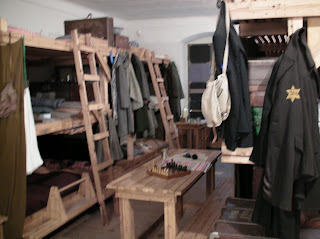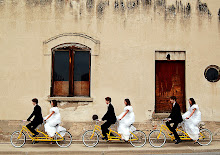Day 1:
Our first day in Prague was a travel day, so we didn’t actually get into the city until mid-afternoon. Then, while trying to find our hotel, we got very, very lost. We probably took every wrong turn we possibly could and it was scorching hot. Plus, we were both carrying around 20+ pounds on our backs, which made things even more miserable. Once we finally did get to our hotel, we were so relieved by the nice, air-conditioned rooms with complimentary apples that we didn’t leave for the rest of the night.
Day 2:
In order to make up for the lack of sight-seeing on our first day in Prague, we spent all of the second day walking around the city seeing everything we could. We started out at Malostranske Namesti (the main square), where we saw the church of Sv Mikulas:
Next, we walked up this cute little street:
To get to the Prague Castle, which includes St. Vitus’ Cathedral:
And the Old Royal Palace (you can see it in the distance here):
After a quick lunch, we walked across Charles Bridge:
And found this really adorable square called Staromestake Namesti:
Finally, we walked down Wenceslas Square (apparently, Good King Wencleslas is from Prague, his crown jewels are actually in St. Vitus’ Cathedral, but they are hardly ever taken out), and ended up at the National Museum, which we didn’t go inside. We did sit by the fountains for a while, which was nice.
Day 3:
On our third day in Prague, we decided to take a day trip to Terezin, which was a concentration camp during World War II. The weather was gray and it drizzled for most of the day, which made for kind of the perfect atmosphere for such a somber place. It was a very humbling experience. The whole place just had this terrible, gloomy feel to it. Terezin wasn’t a death camp, but many of the people there died from the terrible conditions and a good part of those who made it through their time in Terezin ended up getting sent to die in Auschwitz. Here are some pictures from the day:
This is a picture of what a typical women’s dormitory would look like:
This was above the entrance to one of the sections of the camp. It was kind of a Nazi slogan that means “working makes us free” or something to that effect:
They had dozens of rooms that looked just like this where 50 prisoners would sleep:
While the Nazis were running the camp, they either cremated the bodies of the dead prisoners or buried them in mass graves, sometimes with over 600 bodies in one grave. After the liberation of the camp, the bodies were dug up and laid to rest in the national cemetery:












No comments:
Post a Comment